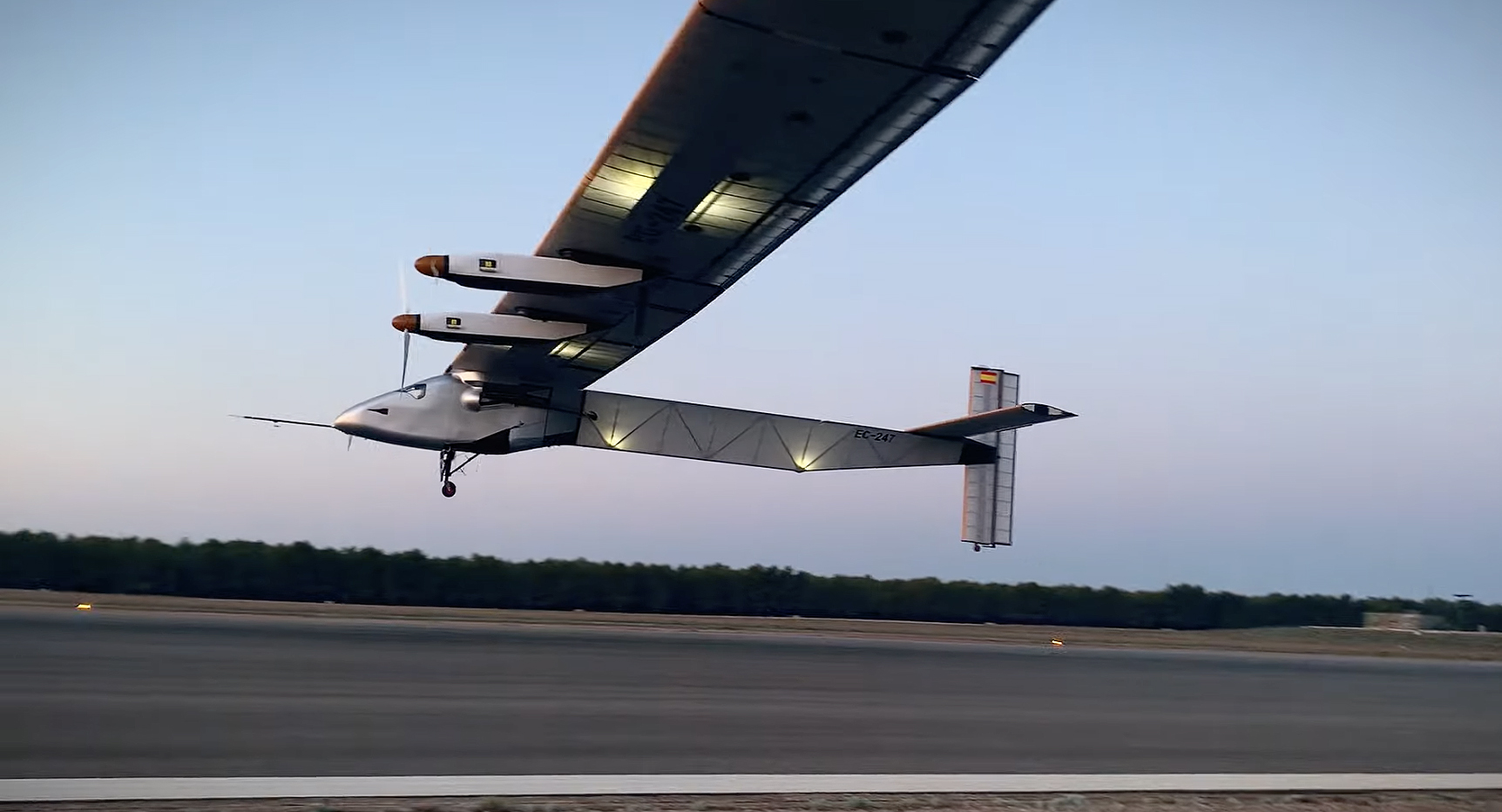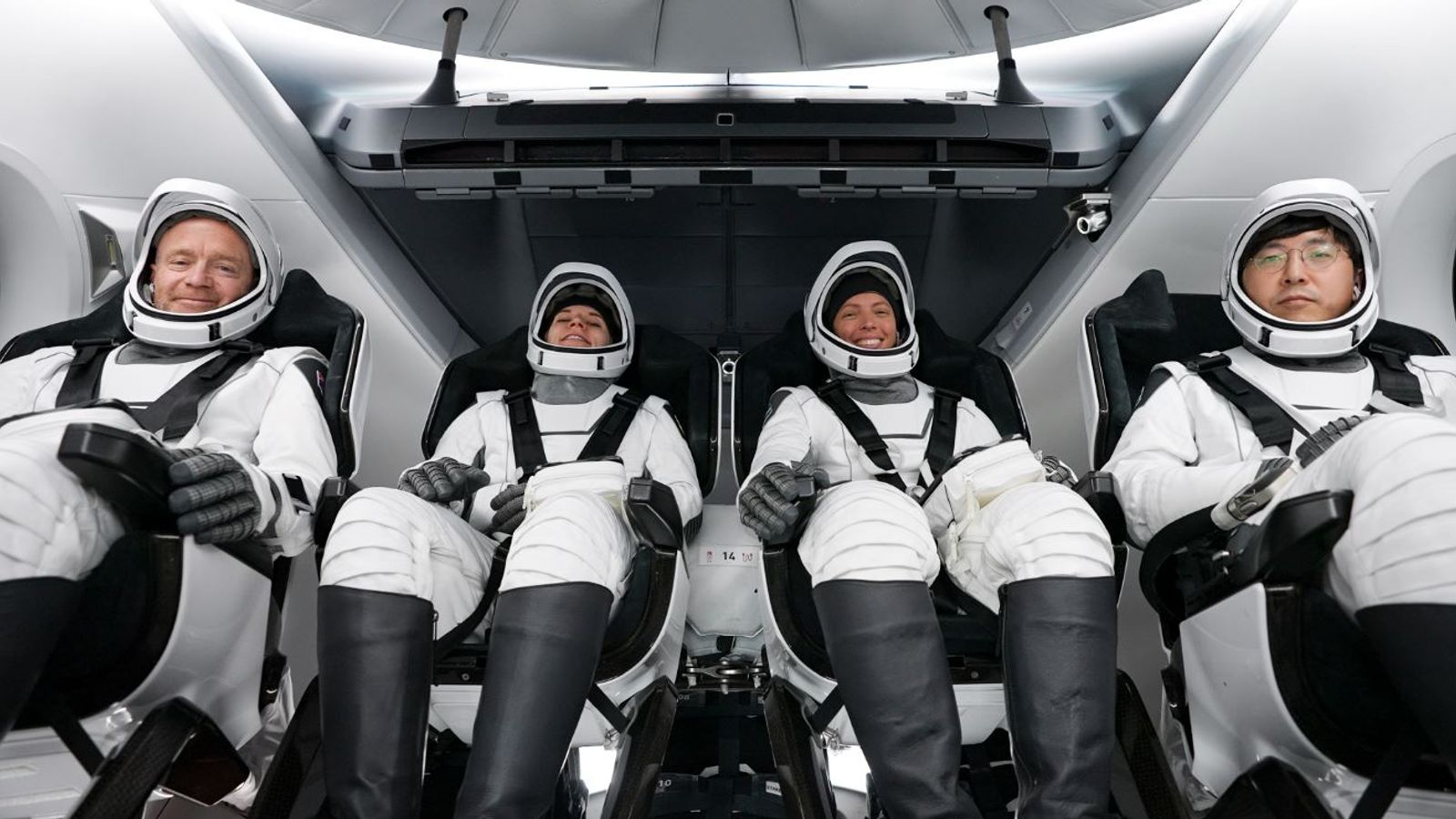T4K3.news
Skydweller drone achieves historic 90-day flight milestone
The solar-powered surveillance drone can now fly continuously for up to 90 days without landing.

Aerospace experts have revealed a groundbreaking solar-powered drone capable of flying for 90 days.
Solar-powered Skydweller aircraft achieves remarkable 90 days of continuous flight
The Skydweller, a solar-powered surveillance drone created by Skydweller Aero and Thales, can remain airborne for up to 90 days without needing to land. Designed with carbon fiber and featuring a wingspan of 236 feet, it harnesses energy from over 17,000 solar cells. This allows it to fly continuously in ideal conditions, outperforming previous records held by aircraft such as the British jet Zephyr, which flew for 67 days. The drone operates at altitudes between 24,600 and 34,400 feet, reducing altitude at night to conserve power, and utilizes batteries for nighttime flying. It has advanced systems in place to manage potential mid-air failures and turbulence, making it a promising innovation in drone technology.
Key Takeaways
"This technology could redefine surveillance operations at sea."
This highlights the strategic importance of the Skydweller in maritime security.
"The Skydweller can leverage sunshine for extended flight time."
This emphasizes the drone's innovative use of solar energy.
"Advanced systems ensure we can fly for days without failure."
This points out the technological advancements in reliability and control.
The Skydweller's extended flight capability marks a significant advancement in drone technology. This could redefine surveillance operations, particularly in maritime contexts, where continuous monitoring is essential. However, the reliance on solar energy and batteries raises questions about operational reliability during adverse weather conditions. The potential for failures in mid-air remains a concern as seen in other lightweight drones, making the design of the Skydweller crucial for its success.
Highlights
- The Skydweller could change the future of surveillance.
- Flying for 90 days straight is a game changer.
- Solar energy is taking flight with Skydweller.
- Continuous monitoring is now a reality.
Concerns over operational reliability and technology risk
The reliance on solar energy and battery power could present challenges in adverse weather conditions, impacting surveillance effectiveness. Previous lightweight solar drones have faced mid-air failures, raising concerns about safety and reliability of the Skydweller design.
As solar technology advances, the future of long-endurance flights looks promising.
Enjoyed this? Let your friends know!
Related News

Putin signals Donetsk focus in Alaska talks

Lollapalooza Day Three Highlights Chance the Rapper and Doechii

Chun Wang's SpaceX flight orbits Earth's poles

Russia scales down Navy Day celebrations due to drone attacks

Beyoncé concludes record-breaking Cowboy Carter Tour

Ben Stokes achieves historic feat in Test match

Trump signals peace talks with Russia ahead of Alaska summit

Armenia signals new chance for Türkiye ties
